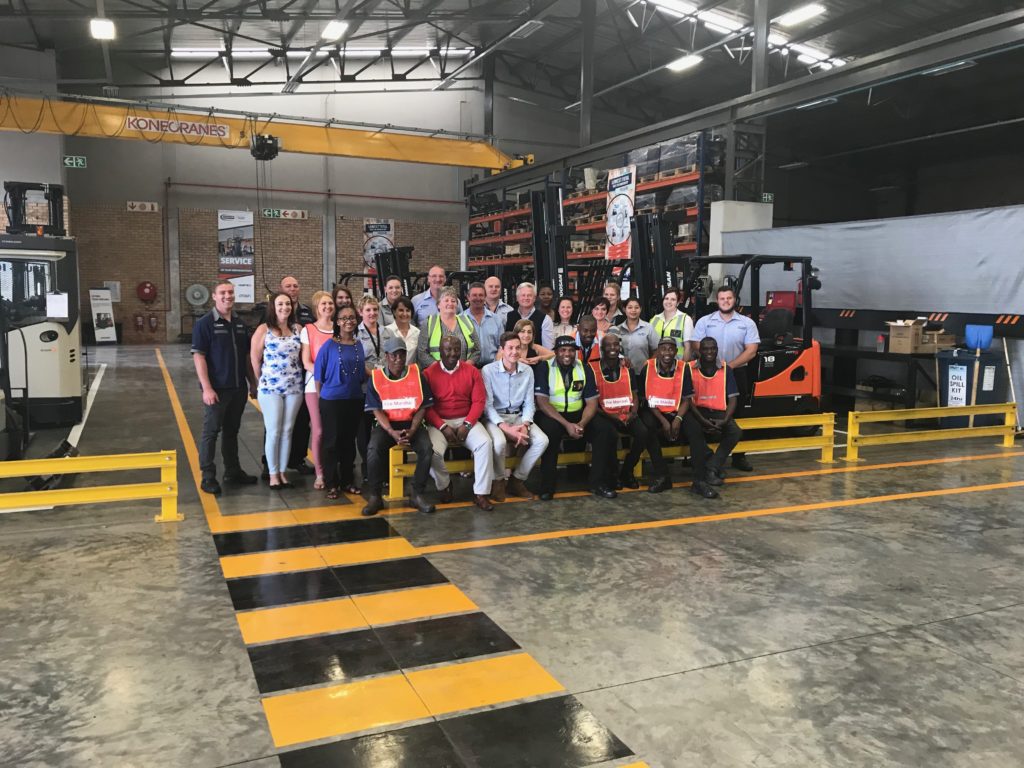In a milestone achievement that asserts an uncompromising stance towards quality and health & safety, Goscor Lift Truck Company (GLTC) has become the first forklift supplier to attain both the ISO 9001: 2015 and OHSAS 18001 accreditations in South Africa.
Quality and health & safety have always been top priorities at Goscor Lift Truck Company, the sole distributor of leading forklift brands, including Crown, Doosan, Bendi and Hubtex. The recent successful upgrade from ISO 9001: 2008 to ISO 9001: 2015 and the OHSAS 18001 accreditation are testimony to the relentless focus on setting the bar high as far as quality is concerned, with no compromise to health & safety.
GLTC set the ball rolling in 2016 when it successfully achieved the ISO 9001: 2008 accreditation. Early this year, a lot of hard work saw the premium forklift supplier successfully upgrade to ISO 9001: 2015. “We are the only forklift company in South Africa to have both the ISO 9001: 2015 and OHSAS 18001 accreditations,” confirms MD Darryl Shafto.
The attainment of these accreditations were a result of hard work. “The route to accreditation wasn’t a walk in the park,” says GLTC Director Anthony Fouché, adding that this called for a lot of hard work and long hours. “The accreditation process started in 2016 and it was an arduous process, but worth the effort.”
One of the major initiatives towards the achievement of the accreditation was having the right people in right positions first. This saw the subsequent appointment of Heather Morgan as National Health and Safety Officer, and Thando Khumalo as Assistant Health and Safety Officer. After another intensive audit by German based TUV, with two days at each national branch, GLTC successfully met the ISO 9001:2015 and OHSAS 18001 standards in February 2018.
ISO 9001: 2015 in focus
Unlike the previous ISO 9001: 2008 standard, the revised version, the ISO 9001: 2015, released in September 2015, expects organisations to understand their objectives before establishing a quality management system. This, in turn, requires them to take a completely fresh look at their current quality processes, consider the external and internal issues that affect quality and define their end goals towards achieving consistent customer satisfaction, something central to GLTC’s operating philosophy.
The ISO 9001:2015 standard is intended to help organisations achieve excellence through a stronger customer focus and improved business performance. The revisions to the standard will enable organisations to enhance their existing quality management programme by defining and documenting processes, training employees, ensuring better supply chain relationship management, adopting a risk-based approach to quality, and involving the leadership team in quality management more often.
ISO 9001:2015 is based on seven principles: Customer Focus, Leadership, Engagement of People, Process Approach, Improvement, Evidence-Based Decision-Making, and Relationship Management. However, according to the new standard, the primary focus of an organisation’s quality management programme is to meet customer requirements, and exceed expectations in terms of the quality of products and services.
Organisations would do well to comprehensively research, analyse and understand both the current and future needs of the organisation and adjust their programmes and processes to deliver these goals. Before that, however, it is important to align organisational objectives to market trends, and communicate them across the organisation. It is also essential to implement programmes and processes to measure customer satisfaction, and act on the results.
OHSAS overview
With the successful implementation of OHSAS 18001, GLTC is putting its employees’ safety and well-being at the top of its agenda. Sound occupational health and safety policies are essential for employees, but they are also increasingly important for an organisation’s customers and other stakeholders. Fouché reiterates that certification to OHSAS 18001 is a strong sign of GLTC’s commitment to its employees’ health and safety.
OHSAS 18001 certification enables the company to manage operational health and safety risks and improve performance. The standard addresses the following key areas: hazard identification, risk assessment and determining controls. Other areas of focus include allocation of resources, roles, responsibility, accountability and authority; competence, training and awareness; communication, participation and consultation; operational control; emergency preparedness and response; performance measuring, monitoring and improvement.
The hard work to accreditation is paying dividends. “When we pitch for new business, companies come round to audit us and see for themselves how we operate. Within 15 minutes of walking around the facility, it’s obvious to them that we have been audited by TUV and accredited with ISO and OHSAS standards,” concludes Fouché.
















